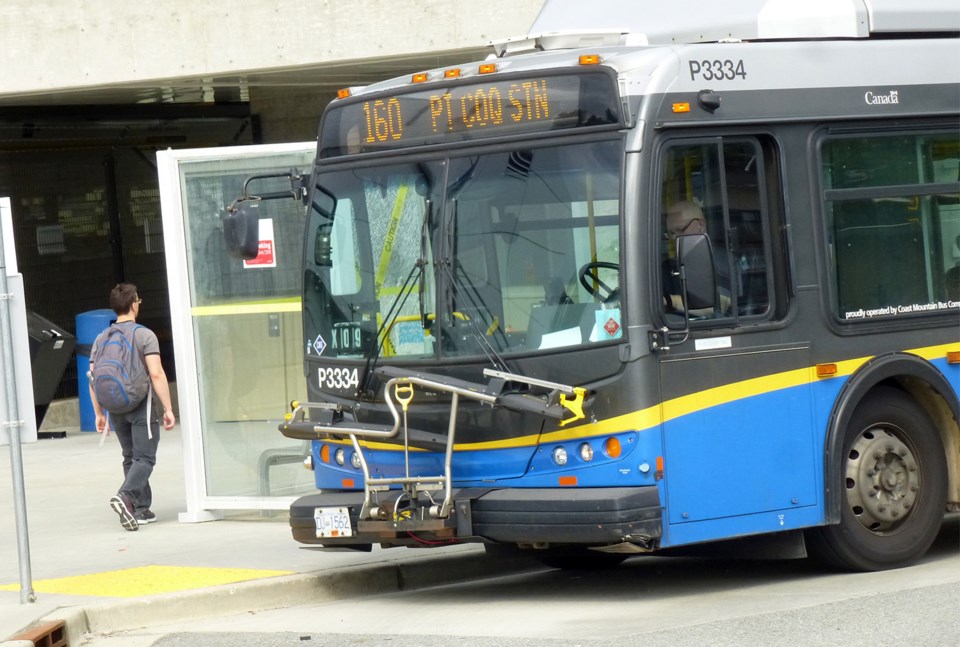Transit ridership grew 5% in the Tri-Cities last year, giving TransLink officials reason to celebrate and to hope that with more frequent service introduced this year and the introduction of SkyTrain, thousands of new riders will emerge.
“We’re quite pleased in that while we’ve only started to increase bus service that the ridership on the bus network is still growing,” said Daniel Freeman, manager of transit network management for TransLink.
TransLink stats show that boardings in this region were up 700,000, or 5%, last year even though bus service grew by only 1%, or 4,000 hours.
The local increase matched the 4.5% hike in system-wide boardings in 2016, the largest increase since the 2010 Olympics, with an improved economy, Compass Card introduction, rising fuel prices and service improvements credited for the jump.
(According to a TransLink press release, there were more than 200 million boardings across the system in the first six months of 2017, a 5.7% increase over the same period in 2016. The press release noted that Metro Vancouver is bucking a trend in which transit boardings are declining in other major U.S. and Canadian cities.)
And while the Evergreen Extension of the Millennium Line didn’t open until Dec. 2, early indications are that it is meeting or exceeding expectations. In just four weeks in December — during one of the coldest and snowiest winters on record — there were 27,000 boardings per weekday.
Freeman said Tri-City transit ridership is expected to be even higher this year, with more frequent service introduced in the spring spring and more bus service changes expected for the fall, along with improved connections to Evergreen stations.
The data is contained in the 2016 Transit Service Performance Review, used to plan adjustments to TransLink’s transit network. Freeman said more will be known about how Tri-City commuters are responding to this year’s increase in service in the 2017 performance review.
In the meantime, the following take-aways can be gleaned from the 2016 report:
• More people are taking transit in off-peak hours, not just weekday mornings and afternoons, with some of the highest growth in ridership between 6 and 9 p.m. and on Saturdays and Sundays.
• SkyTrain is becoming increasingly popular, with roughly 5% growth last year on all three SkyTrain lines.
BUCKING THE TREND
One of the Tri-Cities’ newest cabinet ministers got her day in the spotlight Wednesday.
Selina Robinson, whose portfolio as minister of municipal affairs and housing also includes TransLink, got to roll out the good news that transit ridership is growing in Metro Vancouver. She was quoted in the TransLink press release as stating that the NDP government would continue to invest in transit.



